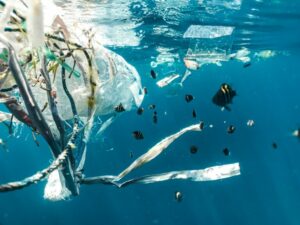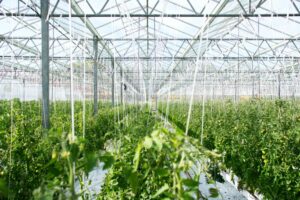The Other COP: Biodiversity and natural capital enter the spotlight
- Published
As the COP26 climate summit at Glasgow has drawn to a close, the first session of another COP also finished recently. The 15th Conference of the Parties (COP15) to the UN Convention on Biological Diversity may have made less headlines, but it’s a COP being closely watched by investors grappling with the implications of the world’s biodiversity and natural capital being under threat. Here is a brief guide to biodiversity and natural capital, the ecosystem services they provide, and the ways investors can respond.
Biodiversity loss and degradation of our natural ecosystems is emerging as a significant threat to the planet. Protecting nature is critical to sustaining future life on earth and, given that protecting biodiversity and ecosystems can limit nature-based carbon emissions and slow climate change’s progression, the criticality in doing so has only increased.
The deterioration of biodiversity and degradation of natural capital, and therefore the reduction in the ecosystem services provided to humans, has grown as a concern to investors given its potential to adversely impact the global economy. First and foremost, it is a risk to be managed, requiring additional considerations of how a company’s operations and supply chains may be impacted by changes to the natural world.
However, it also presents investment opportunities. Events such as COP15 which shape global goals and agreed actions to conserve nature are making it clearer what role companies can play in developing nature-related solutions.
This guide highlights the value that nature offers to the economy – which is typically under-appreciated – and why it requires protection. We also detail how investors can respond to the risks and opportunities this challenge presents, before highlighting what we can expect by way of near-term policy developments.

Key concepts
What is biodiversity?
Biodiversity can be understood as all living things on earth – from humans and animals to plants and bacteria. Sadly, the state of biodiversity is struggling – the World Wildlife Fund has estimated that global animal populations fell by 68% on average between 1970 and 2016, with some regions suffering much higher losses.[1] This has largely been driven by human-caused habitat destruction, invasive species and disease, and is being accelerated by climate change.
What is natural capital?
Natural capital is a term that has emerged over the past decade or so. It refers to the stocks or reserves of natural assets or resources that benefit humans, such as water, air, soils, plants and animals. Some natural capital is renewable or regenerative, while some is finite.
What are ecosystem services?
Ecosystem services are closely related to natural capital. They are generally defined as the direct or indirect benefits provided to humans from the transformations of natural capital into a flow of ‘services’. An obvious example would be that some plants and animals (natural capital) can transform into food (a service). Ecosystem services also include natural processes such as pollination, water purification and erosion control, as well as non-material benefits such as spiritual enrichment and recreation. Some natural processes are so essential that all ecosystems, including human life within them, would collapse without them. These include processes such as photosynthesis, soil formation and the water cycle.
The link between biodiversity and ecosystem services
Biologically diverse ecosystems enable greater ecosystem services than those which aren’t. Unfortunately, human activity which has historically sought to extract as many benefits from nature as possible, has driven the biodiversity loss described above, which in turn leaves the ecosystem less able to provide services in the future.
[1] World Wildlife Fund, ‘Living Planet Report 2020’

Nature and the economy
Although nature has intrinsic value, markets have typically not placed financial value on nature’s role or use to humans. Not doing so has undoubtedly driven unsustainable use of natural capital, biodiversity loss and degradation of ecosystem services.
Putting a price on nature is a complex exercise, especially when it is hard to quantify the value – either in monetary terms or otherwise – of ecosystem services such as pollination. Nevertheless, this is changing as the world moves towards a more sustainable model of economic development, necessitating a greater financial appreciation of nature’s use to the economy.
Those that have tried to quantify at least the more measurable aspects of biodiversity and natural capital have found the value of nature to the global economy is considerable. However, if society does not begin to employ more nature-positive practices to curtail biodiversity loss, damage to natural capital and ecosystem services, we can anticipate that much of this value will be destroyed.
A 2020 study by the World Economic Forum (WEF)[2] has estimated that more than half of the world’s GDP (over $59 trillion in economic value) is either moderately or highly dependent on nature and consequently these economic activities can be considered exposed to biodiversity loss and ecosystem destruction. It is unsurprising then that the WEF’s 2021 Global Risks Report has also placed biodiversity loss and human environmental damage as top risks – both by likelihood and by impact.
To further illustrate what a world economy dependent on yet accelerating the degradation of nature looks like, consider the small snapshot offered from the below:[3]
- A World Bank estimate of a collapse in select ecosystem services could result in a USD 2.7 trillion decline in global GDP annually by 2030
- More than 2 billion people rely on timber as their primary source of fuel for cooking, heating and other energy needs
- Over a billion people depend on the earth’s forests for some part of their livelihoods and food security
- The combined market value of livestock and fisheries was nearly USD 1.3 trillion in 2016
- Tourism to protected areas generates an estimated USD 600 billion annually
- 25–50% of pharmaceutical products are derived from natural organisms

Protecting nature
As our collective understanding of the importance of biodiversity and the benefits we derive from nature has rapidly improved, there is increasing global attention on driving action to conserve nature. Not only for the long-term viability of the planet but to enable economic development to progress in a more sustainable way.
This is demonstrated by the efforts of COP15 and other UN initiatives as well as the contribution to the literature on natural capital for policymakers by the likes of the World Bank and the WEF. Previously, such conversations were led by scientists and environmental activists.
With biodiversity and natural capital closely intertwined with climate change, global efforts to address the latter will further accelerate public policy efforts to not only integrate considerations of nature in broader decision making, but to drive action for its protection.
Actions will go beyond halting degradation of what remains to also include efforts to reverse damage already done to ecosystems and biodiversity loss. Doing so will require a range of responses – from the regulatory and market-based, to those driven by technological advances and local communities.
Responding as an investor
Given nature’s links to human wellbeing and the economy, biodiversity loss and damage to natural ecosystems is an investment risk. Concurrently, the need to address these negative impacts creates significant investment opportunities in the conservation and sustainable use of nature.
While this is inherently a systematic issue, investors can still consider the company-specific implications of biodiversity and natural capital. At Paradice, we have begun thinking about how we can assess nature-based risks and pursue investment opportunities to protect and enhance returns for our clients.
Assessing risk
Assessing a company’s exposure to biodiversity loss and ecosystem services requires consideration of the impact a company’s operations or products have upon the environment, as well as the extent to which it is dependent on natural capital or ecosystem services.
If a company’s activities drive significant biodiversity loss or contribute to other environmental harms they will be increasingly at risk of reputational damage, regulatory restrictions and legal liabilities. Environmental impact assessments and obligations around mine site rehabilitation obligations have been in place for the resources sector for many years. Investors have long been cognisant of sectors which produce significant amounts of waste or air pollutants in the production process (e.g. chemicals) or contribute to land clearing (e.g. agriculture).
The next frontier is understanding how companies have considered and are responding to their impact on biodiversity specifically. This requires new forms of assessment which go beyond traditional environmental impact assessments. For example, surveying proximity to protected ecosystems, the make-up of local wildlife (especially if it includes endangered species) and the extent to which operations may impact animals’ migratory patterns.
Investors are increasingly looking for evidence in company disclosures that such analysis has been done and the company is mitigating impacts as appropriate. Further, that biodiversity is increasingly being integrated into business considerations, such as specific location of sites (accommodating local ecosystems) or adoption of alternative processes (e.g. lower impact pesticides in agriculture).
Now attention is moving to other sectors where such impacts have been under-considered, such as those which occur further down the value chain. Single-use plastics and packaging is one such example, where environmental impacts of the production site may be limited but throughout the products’ lifecycle it could significantly impact biodiversity.
The other key angle for assessment relates to a company’s dependencies, given availability of natural resources and ecosystem services is at risk. Water provides an essential ecosystem service, upon which many industries heavily rely during production processes. Investors have long considered location-specific water availability, especially in regions more susceptible to drought. However, there are other ecosystem services upon which many companies rely, such as the provision of raw materials or genetic resources.
Dependencies can be local and direct (grazing land for livestock) or throughout the supply chain. Investors are increasingly looking for companies to consider what nature-based inputs are required for their key components, and to what extent these are at risk from biodiversity loss and ecosystem degradation. Further, whether risks can be mitigated, such as through geographic diversification throughout the supply chain or substituting for more sustainable materials.
Pursuing opportunities
While some may think nature-related investment opportunities are most readily available to investors in private equity and real assets, there are many publicly listed companies whose products or services offer solutions relevant to more sustainable use of resources and enabling greater protection of nature. These companies will be well positioned to benefit as global action to address biodiversity loss and protection of nature accelerates.
Many opportunities are closely linked to driving more efficient use of natural resources, especially water, land and non-regenerative resources. For example, in the agricultural sector – where the world is also seeking to address food security for a growing population – efficiencies are particularly important. Innovation and technological advances have enabled precision agriculture and vertical farming, which minimise water use and maximise crop yields.
Another set of opportunities relates to those products or services which enable reduced environmental impacts. Some solutions are more targeted, such as green pesticides for crops which reduce chemicals leaching into surrounding waterways, while others contribute to addressing system-wide issues, for instance recycling infrastructure and alternatives to single-use plastics.
Given the scale of the challenge, which requires multi-varied changes to occur throughout the global economy, we believe the opportunities in this space will only increase. The key will be for companies to provide sufficient disclosures around the environmental benefits of their products or services to secure investors’ capital.

Where to next?
International efforts are underway to not only drive action to conserve nature, but also to standardise nature-based accounting and to support financial market participants navigate nature-based risks. All of these developments will only serve to mainstream the consideration of biodiversity and natural capital within the investment process.
The 15th Conference of the Parties (COP15) to the UN Convention on Biological Diversity is being held in two sessions due to covid-19. The first session was held virtually in October, and the second will be held in person next year in late April in Kunming, China. The Paris Agreement, borne out of the climate-focused COP held in 2015, demonstrates the potential impact of such forums which determine global protocols and ambitions.
COP15 will review the Convention on Biological Diversity’s Strategic Plan for 2011-2020 and consider a framework for the coming decade. What is agreed by UN member states will provide signals to companies and investors alike regarding future policy action and priority areas.
June 2021 saw the launch of the Taskforce on Nature-related Financial Disclosures (TNFD), an initiative building on the model developed by the Task Force on Climate-related Financial Disclosures (TCFD) which has become widely adopted by companies and investors alike. The TNFD’s purpose is to “develop and deliver a risk management and disclosure framework for organisations to report and act on evolving nature-related risks”. Working towards delivery in 2023, the taskforce comprises various groups and multi-disciplinary expertise and will be consulting with institutions globally.
For Paradice specifically, we will be monitoring developments globally and enhancing how we think about biodiversity and nature within our investments accordingly. We acknowledge that we are early on the journey ourselves, and many of our investee companies have not yet commenced thinking about nature-based risks. We will be seeking to have constructive conversations to build awareness in this area and in time progressively communicate our expectations as investors with respect to management of related risks and opportunities. As a result of these conversations, and our own internal research, we hope to be better positioned to identify the winners and losers that will emerge in the coming decades.
[2] World Economic Forum, ‘Nature Risk Rising’, 2020
[3] World Bank, ‘The Economic Case for Nature’, 2021; IPBES, ‘The Global Assessment Report on Biodiversity and Ecosystem Services’, 2019
Disclaimer:
This material (or any contribution to it) is not intended to constitute advertising or advice (including legal, tax or investment advice or security recommendation) of any kind. It is of a general nature only and was current only at the time of initial publication. The information and opinions contained herein are not necessarily all-inclusive and, as such, no representation or warranty, express or implied, is made as to the accuracy, completeness or reasonableness of any assumption contained herein and no responsibility arising for errors and omissions (including responsibility to any person by reason of negligence) is accepted by Paradice, its officers, employees or agents. It may contain certain forward looking statements, opinions and projections that are based on the assumptions and judgments of Paradice with respect to, among other things, future economic, competitive and market conditions and future business decisions, all of which are difficult or impossible to predict accurately and many of which are beyond the control of Paradice. Because of the significant uncertainties inherent in these assumptions, opinions and judgments, you should not place undue reliance on these forward looking statements. You should consider your own needs and objectives and consult with a licensed financial adviser. For the avoidance of doubt, any such forward looking statements, opinions, assumptions and/or judgments made by Paradice may not prove to be accurate or correct. References to securities may or may not represent the holdings of the Paradice Funds. The content of this publication is current as at the date of its publication and is subject to change at any time. It does not reflect any events or changes in circumstances occurring after the date of publication.